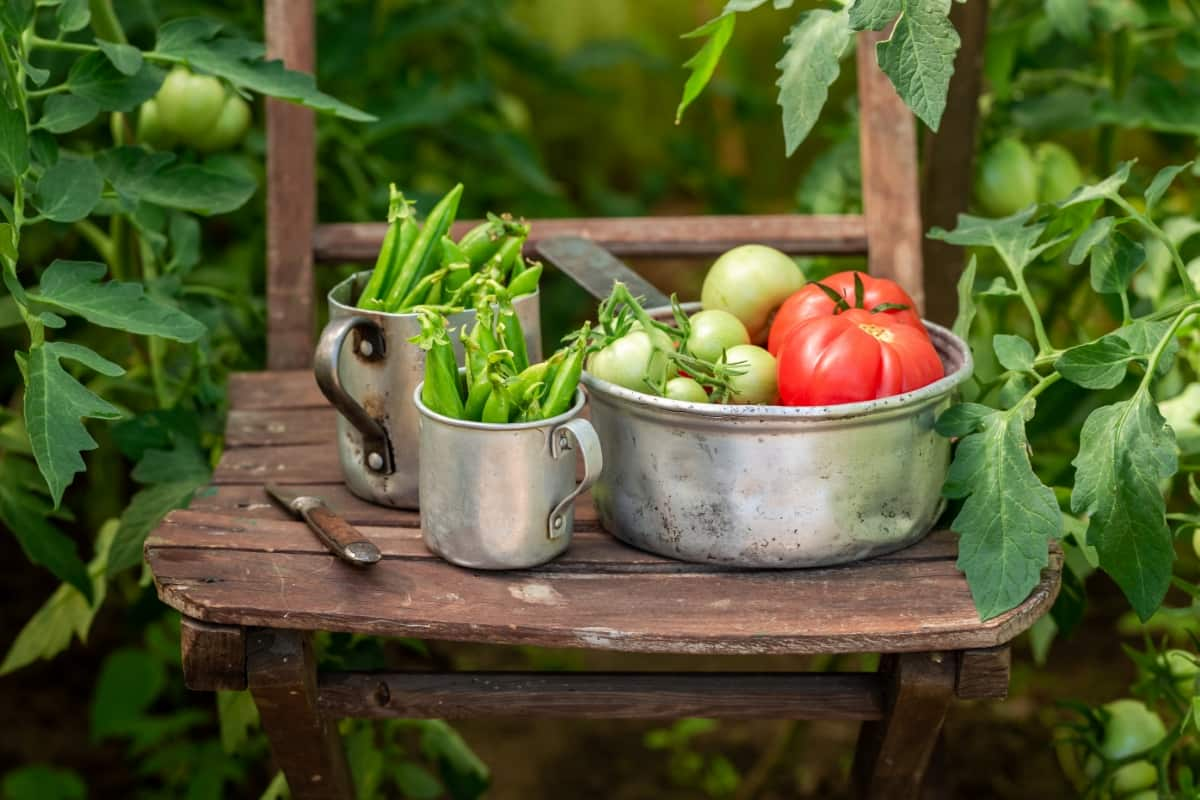Northern California presents a unique and opportune environment for vegetable gardening due to its distinct climate and varying soil types. The region’s Mediterranean climate, characterized by dry, hot summers and wet, mild winters, offers various vegetables that can be grown throughout the year.

This article provides a comprehensive guide on when, what, and how to make the most out of your vegetable garden in Northern California. The focus is on the art of organic gardening, the benefits of year-round planting, the value of cold-hardy and drought-resistant vegetables, and the importance of companion planting.
North California Vegetable Gardening
Best Vegetables to Plant in North California
Northern California is suitable for growing a wide range of vegetables, thanks to its climate and fertile soil. The best vegetables to plant include tomatoes, peppers, lettuce, spinach, kale, peas, beans, cucumbers, squash, and carrots.
The region’s warm summers allow heat-loving vegetables such as tomatoes and peppers to thrive, while the cooler, wet winters are perfect for cold-hardy greens like kale and spinach. Given the region’s well-draining soil, root vegetables such as carrots also do well in this climate. Choose varieties well-suited to the region’s climate and your specific microclimate to ensure the best results.
North California Planting Guide for Vegetables
To achieve the best results in vegetable gardening, timing is crucial. Northern California’s planting seasons generally divide into the cool season, from September to March, and the warm season, from March to September. Cool-season crops, such as peas, lettuce, and broccoli, are ideally sown during late summer or early fall to be harvested during winter or early spring.
Conversely, warm-season crops like tomatoes, peppers, and eggplants thrive when planted in early to mid-spring, after the threat of frost has diminished and soil temperatures have increased. These crops can be harvested from summer through fall.
Vegetable Gardening Tips for North California
Success in Northern California vegetable gardening hinges on understanding the region’s unique climate and soil conditions. Some tips include improving the soil with organic compost before planting to ensure it is nutrient-rich, using mulch to retain soil moisture and control weeds, and practicing crop rotation to prevent soil-borne diseases and pests. It’s also essential to provide adequate water, particularly in the dry summer months, and to use efficient irrigation systems like drip irrigation or soaker hoses to conserve water.
When to Plant Vegetables in North California
The timing for planting vegetables in Northern California largely depends on the type of vegetable and the particularities of the local climate. Typically, seedlings of warm-season crops can be initiated indoors during late winter or early spring and subsequently moved outdoors once the threat of frost subsides, typically around late March or early April. On the other hand, cool-season crops can be sown directly outdoors in late summer or early fall for harvest during the winter months.
North California Vegetable Planting Calendar
| Month | Cool Season Vegetables | Warm Season Vegetables |
| January | Lettuce, Kale, Spinach, | |
| Swiss Chard, Radishes | ||
| February | Broccoli, Cabbage, | |
| Cauliflower, Lettuce, Peas | ||
| March | Beets, Carrots, Lettuce, | Tomatoes (transplants), |
| Spinach, Swiss Chard, | Peppers (transplants), | |
| Turnips, Radishes, Peas | Eggplants (transplants) | |
| April | Beets, Carrots, Lettuce, | Corn, Cucumbers, Squash, |
| Spinach, Swiss Chard, | Melons, Beans, Tomatoes, | |
| Turnips, Radishes, Peas | Peppers, Eggplants | |
| May | Beets, Carrots, Lettuce, | Corn, Cucumbers, Squash, |
| Spinach, Swiss Chard, | Melons, Beans, Tomatoes, | |
| Turnips, Radishes, Peas | Peppers, Eggplants | |
| June | Lettuce, Spinach, Swiss Chard | Corn, Cucumbers, Squash, |
| Melons, Beans | ||
| July | Lettuce, Spinach, Swiss Chard | Corn, Cucumbers, Squash, |
| Melons, Beans | ||
| August | Lettuce, Spinach, Swiss Chard | Corn, Cucumbers, Squash, |
| Melons, Beans | ||
| September | Lettuce, Spinach, Swiss Chard | |
| Beets, Carrots, Kale, | ||
| Radishes, Turnips | ||
| October | Lettuce, Spinach, Swiss Chard | |
| Beets, Carrots, Kale, | ||
| Radishes, Turnips | ||
| November | Lettuce, Kale, Spinach, | |
| Swiss Chard, Radishes | ||
| December | Lettuce, Kale, Spinach, | |
| Swiss Chard, Radishes |
Year-Round Vegetable Gardening in North California
Thanks to its Mediterranean climate, year-round vegetable gardening is possible in Northern California. Cool-season crops like kale, chard, and spinach can be grown throughout the mild winter months, while warm-season crops like tomatoes, peppers, and cucumbers thrive in the heat of the summer. By carefully selecting and rotating crops, gardeners can ensure a continuous harvest throughout the year.
In case you missed it: South California Vegetable Gardening/Planting Calendar: Know What to Grow in Different Seasons and Months

Organic Vegetable Gardening in North California
Organic gardening practices are highly effective in Northern California due to the region’s fertile soil and climate. Incorporating organic compost into the soil, using natural pest control methods such as beneficial insects and companion planting, and avoiding synthetic fertilizers and pesticides can all contribute to a healthy and productive organic vegetable garden.
Growing diverse crops can also help improve soil health and deter pests. The abundance of local organic resources, from compost to organic seed suppliers, also makes organic gardening achievable in the region.
Cold-Hardy Vegetables for North California
While the winters in Northern California are milder than in many regions, cold-hardy vegetables are essential for maintaining year-round productivity. The assortment comprises of nutrient-rich leafy greens such as spinach, kale, and chard, root vegetables like carrots and radishes, and cruciferous vegetables like broccoli, cauliflower, and Brussels sprouts. These vegetables can tolerate cooler temperatures and shorter days of winter, and many even have improved flavor after exposure to frost.
Drought-Resistant Vegetables for North California
Given Northern California’s dry summers, drought-resistant vegetables are also key for a successful garden. These include deep-rooted vegetables like tomatoes, which can access water further down in the soil, and crops like beans and squash with broad leaves to shade the soil and reduce evaporation. Gardeners can also use techniques such as mulching and efficient irrigation to conserve water and protect plants from heat stress.
Companion Planting in North California Vegetable Gardens
Finally, companion planting is a valuable practice in Northern California vegetable gardens. This involves planting crops that benefit each other by deterring pests, enhancing growth, or improving soil health. Examples include planting basil with tomatoes to repel insects and improve flavor or planting beans with corn to allow the beans to climb the corn stalks and add nitrogen to the soil. Companion planting enhances productivity and contributes to a more biodiverse and resilient garden ecosystem.
In case you missed it: Western California Vegetable Gardening/Planting Calendar: Know What to Grow in Different Seasons and Months

Conclusion
To sum up, vegetable gardening in Northern California offers rich rewards, thanks to the region’s favorable climate and fertile soils. By understanding when and what to plant, incorporating organic practices, selecting cold-hardy and drought-resistant varieties, and utilizing strategies like companion planting, gardeners can enjoy a bountiful and continuous harvest throughout the year.
- Feed Your Flock for Less: Top 10 Tips to Save on Chicken Feed
- Ultimate Guide to Ossabaw Island Hog: Breeding, Raising, Diet, and Care
- Hatching Answers: The Top 10 Reasons Your Chickens Aren’t Laying Eggs
- Eggs and Economics: Breaking Down the Cost of Raising Backyard Chickens
- Defend Your Greens: Proven Methods to Keep Iguanas Out of Your Garden
- Ultimate Guide to Cinnamon Queen Chicken: A Comprehensive Guide for Beginners
- Ultimate Guide to California Tan Chicken: Breeding, Raising, Diet, Egg-Production and Care
- Ultimate Guide to Marsh Daisy Chicken: Breeding, Raising, Diet, and Care
- 10 Types of Chicken Farming Businesses You Can Start for Profits